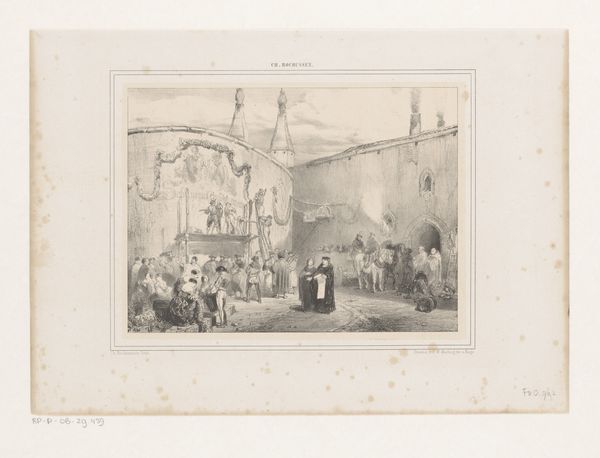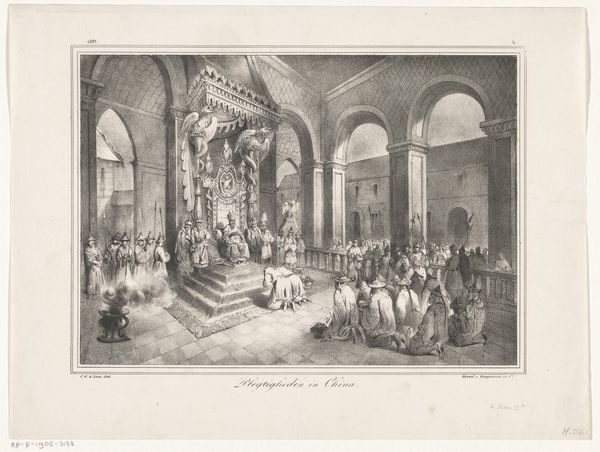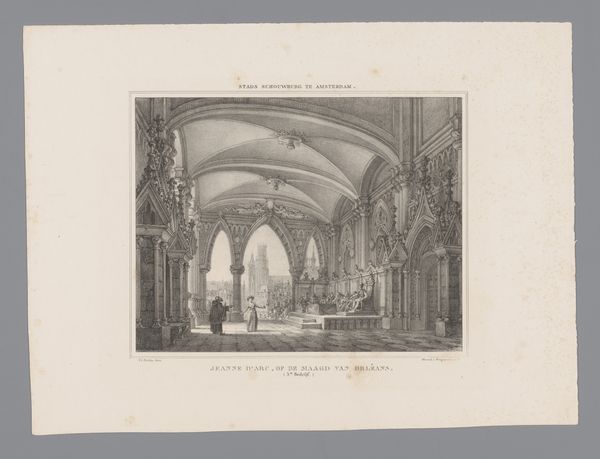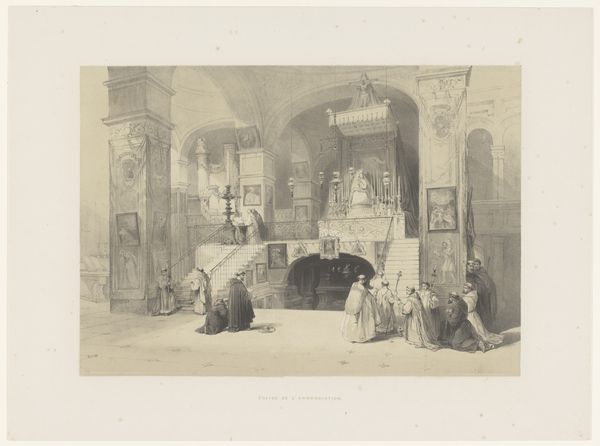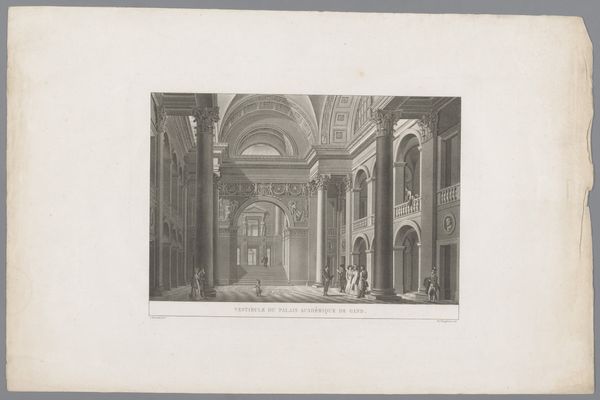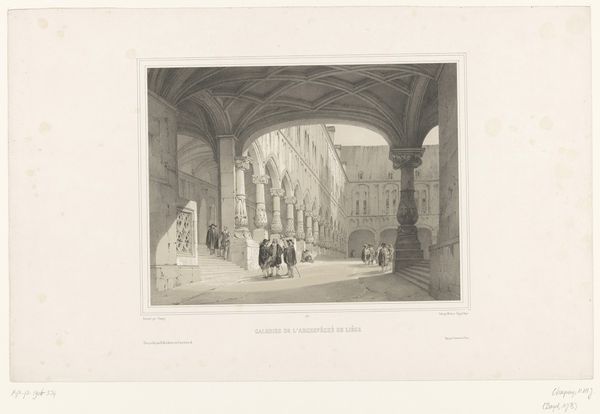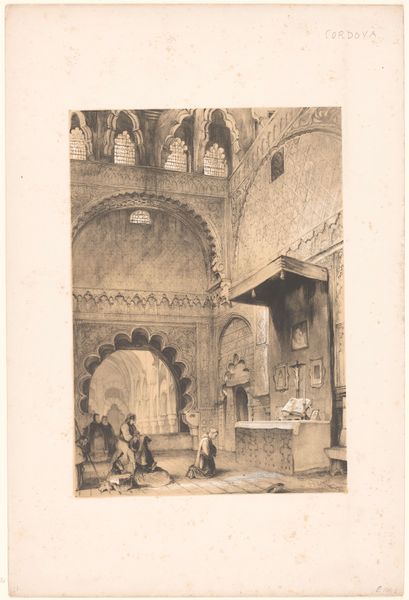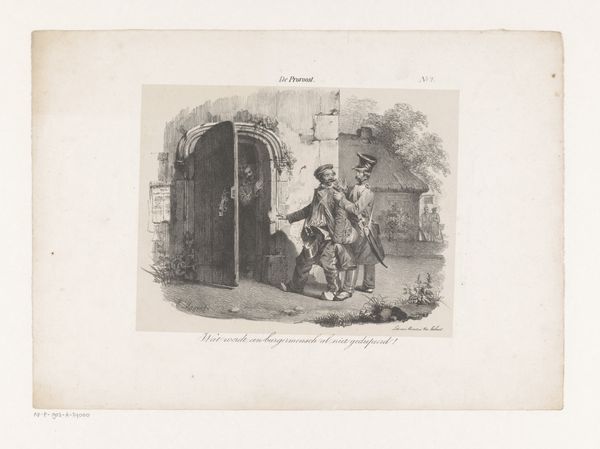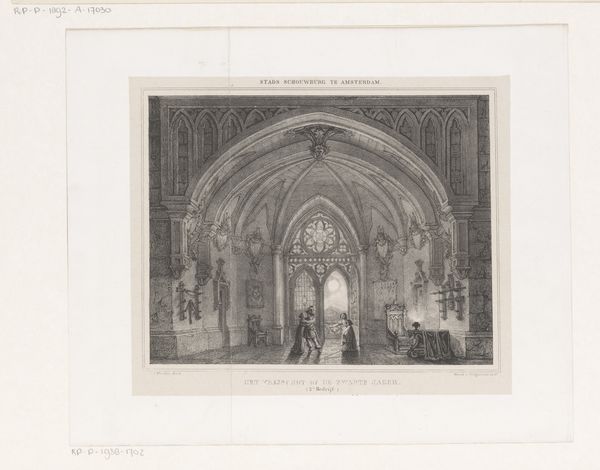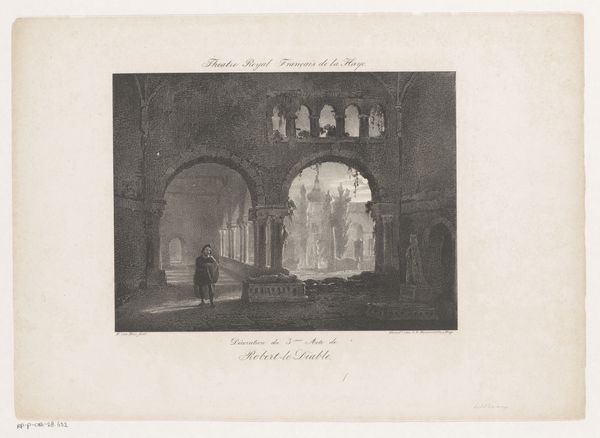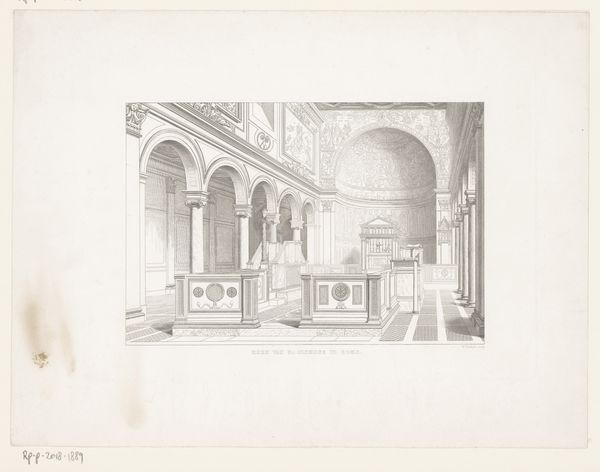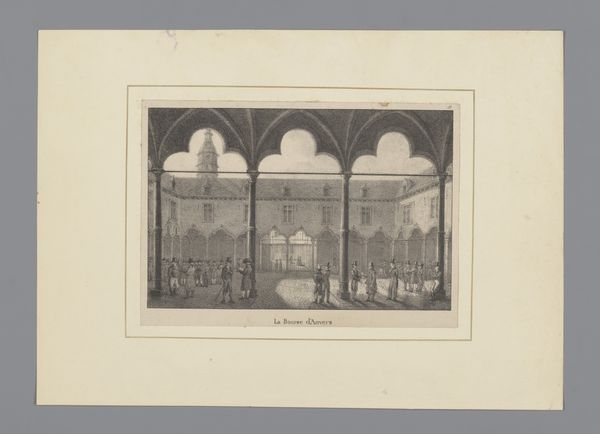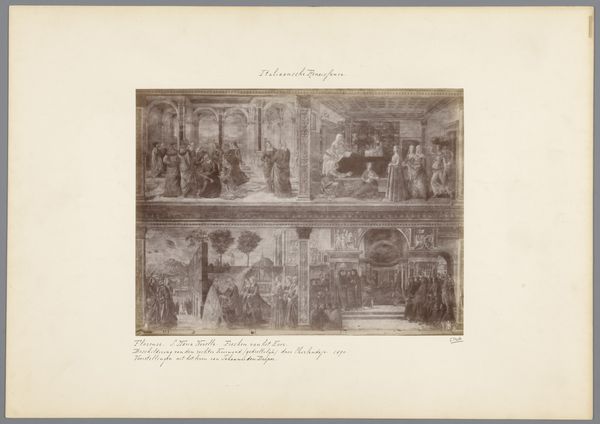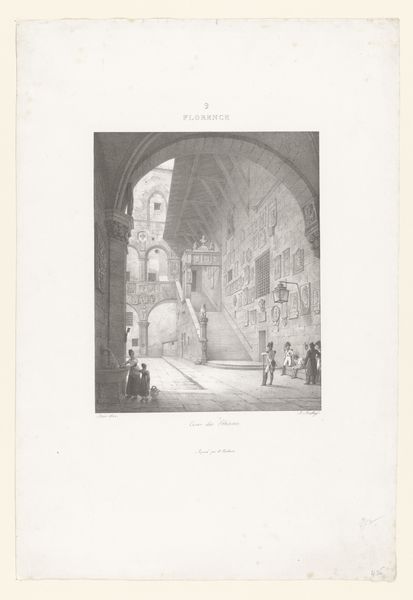
print, engraving, architecture
# print
#
cityscape
#
islamic-art
#
genre-painting
#
engraving
#
architecture
Dimensions: Sheet: 22 3/8 × 15 5/8 in. (56.9 × 39.7 cm)
Copyright: Public Domain
Editor: This is “100. Un Iwân, à Damas” by Joseph-Philibert Girault de Prangey, made in 1843. It’s an engraving of what looks like a gathering inside a highly ornamented building. What jumps out at me is the incredible detail, the textures achieved with what I understand is a print. What’s your take on this work? Curator: Well, focusing on the process, the choice of engraving to depict this iwân in Damascus is fascinating. Consider the labor involved in producing such detail, meticulously etched onto a plate. It highlights the Western gaze upon Islamic architecture. It is not a quick sketch but a labor-intensive production. It makes me wonder: who was this print for, and how would they consume it? Editor: That's interesting! I was caught up in the aesthetics, but thinking about it as a commodity… what did engravings like this signify for the market back then? Curator: Exactly. Prints democratized images, making exotic locales and architectural marvels accessible to a wider audience. But look closer at the scene. It's not just architecture; it includes people. How are they positioned within the frame, and what does their placement suggest about the relationship between the Western viewer and the 'Orient'? How were these people being made into objects of consumption, too? Editor: They are certainly positioned to allow full appreciation of the surroundings. Like, the architecture is the star. Curator: And what does that do to our understanding of the print? Is it documentary, artistic, or something in between? What work is the print performing for its original consumer? Editor: Wow, I hadn’t considered that. Thanks, I see so much more now. It's about labor, material consumption, and how that intersects with cultural representation. Curator: Indeed. It transforms our understanding from a simple depiction to a complex web of production, consumption, and cultural exchange.
Comments
No comments
Be the first to comment and join the conversation on the ultimate creative platform.
